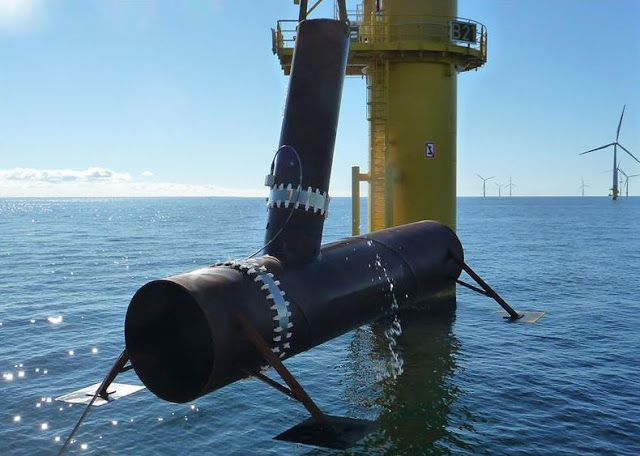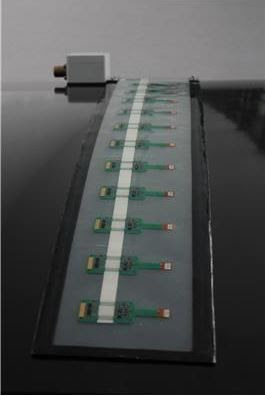

| Online: | |
| Visits: | |
| Stories: |

| Story Views | |
| Now: | |
| Last Hour: | |
| Last 24 Hours: | |
| Total: | |
Long-Term EKG for Wind Turbines
Waves beat against the pylons of offshore wind turbines, and winds shake the rotors. Because of this, the base of the turbine, which is located underwater near the seabed, must be able to withstand severe stresses. Corrosive saltwater can also damage the foundations. Divers descend periodically to inspect the highly vulnerable welding seams of these anchor points. They need to determine if these are still in good order, or whether any cracks or defects have appeared that pose a safety risk.
Automated measurement using a sensor ring
In the future, this arduous and sometimes dangerous task can be performed by a robot; more specifically, a box-shaped remote operating vehicle, or ROV for short. The groundwork for this technology has been laid by researchers at the Fraunhofer Institute for Ceramic Technologies and Systems IKTS in Dresden in cooperation with various industry partners.
But how does the system work? “The heart of the system is the sensor ring, which is placed around the weld and remains there for the entire service life of the wind turbine,” Schnabel explains. This ring is composed of numerous sensor elements arranged like a string of pearls, with spaces of five to seven centimeters between them. To take the measurements, the diver first connects a battery-powered handheld device to the interface port on the ring and then begins the analysis with the press of a button. In the future, this task will be performed by the robot. The laborious task of cleaning the area using high pressure is no longer needed.
Each of the sensor elements takes its turn in functioning as an actuator. Here’s how it works: the sensor hits the weld with ultrasound waves, which then permeate the entire structure. If there is a crack somewhere, the waves will be reflected back from the damaged area, while passing unobstructed through the intact areas. The other sensors detect these signals, and in this way they can home in on the damaged areas.
Practical trials in the Baltic Sea concluded successfully
Working together with staff from Baltic Taucher in Rostock, the researchers successfully demonstrated the viability of the process in an on-site trial at the Baltic 1 offshore wind farm. For this trial, they made a crack measuring 0.9 millimeters in width, 45 millimeters in length, and 7 millimeters in depth in a branched metal pipe, and lowered it to the bottom of the Baltic Sea at a depth of 18 meters.
Contacts and sources:
Source: http://www.ineffableisland.com/2016/03/long-term-ekg-for-wind-turbines.html




